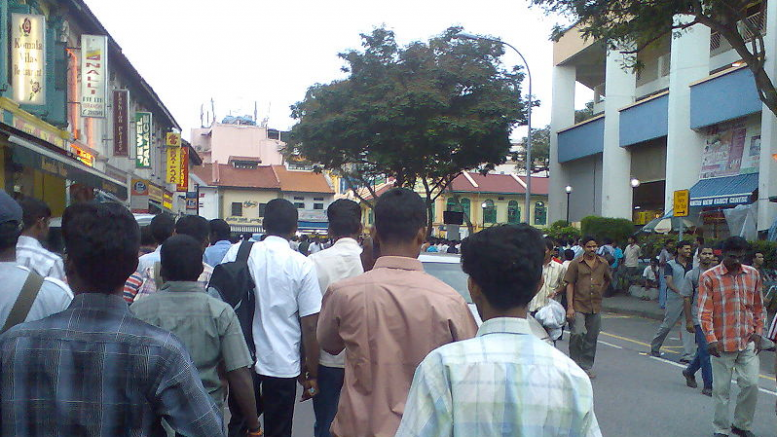Is this ‘2 full page’ ‘Insight’ article on ‘helping low-wage workers’ in the Straits Times arguably, full of ‘contradictory statistics’?
I refer to the ‘Insight’ article “Helping low-wage workers: What more can be done? ” (Sunday Times (2 full pages), Jun 24).
It states that “Cleaner Sucila Rajoo, whose basic monthly salary was $600 when she started work 18 years ago, now earns $1,300, plus an incentive of $100 a month for good attendance and performance. The mother of three has much more financial freedom and can even set aside money for short trips to places like Indonesia, Thailand and Malaysia, thanks to measures that have been introduced to significantly boost wages of workers like her.
Measures like the Progressive Wage Model have lifted the incomes of low-wage workers over the past decade …”
As to “Eighteen years ago, cleaner Sucila Rajoo started work with a basic monthly salary of $600.
Over the years, her salary rose at a snail’s pace, making it hard for the mother of three to make ends meet.
It was only about five years ago that her salary began growing at a much healthier rate.
Now she earns $1,300, plus an incentive of $100 a month for good attendance and performance.
It is no coincidence that her salary picked up back then. Since 2012, measures, such as the Progressive Wage Model (PWM), have been introduced to significantly boost wages of workers like her” – this seems to give the impression to readers that “Eighteen years ago … cleaner(s) … basic monthly salary … (was) $600”.
However, “According to the 1999 Singapore Yearbook of Manpower Statistics” … ‘the mean and median monthly basic wages in 1999’ for ‘cleaners, laborers and related workers’ was ‘$1,042 and $1,015′”, respectively (source: “Compensation systems in Singapore” pages 5 to 6, by David Wan and Chin Huat Ong, Sage Publications, July/August 2002).
So, how is it possible or appropriate to give the impression to readers that the monthly basic salary of cleaners was only $600 – 18 years ago in 2000, when the official statistics above cited $1,015 in 1999?
Moreover, according to the Straits Times own article “Mindset change needed to help low-wage workers” (Straits Times, Feb 7, 2012), “in 2000, the median gross wage for cleaners and labourers was $1,277. By 2010, it fell to $960. For cleaners of industrial buildings like Mr Johari, the median gross wage is even lower, at around $600 in 2010”.
So, if the Straits Times said that “in 2000, the median gross wage for cleaners and labourers was $1,277” – how is it possible or appropriate to give the impression to readers that the monthly basic salary of cleaners was only $600 – 18 years ago in 2000?
With regard to “For now, PWM is mandatory only for those in the cleaning, security and landscaping industries
This model sets the minimum wage these workers should be paid, depending on their skill levels.
As they upgrade their skills, they get paid more.
Also in 2012, the National Wages Council (NWC) began spelling out how much of an increment companies in general should give low-wage workers.
And so, workers are now reaping the benefits of this focused approach
However, unionists are calling for even more to be done.
For starters, the National Trades Union Congress (NTUC) has begun polling low-wage workers in the food and beverage (F&B) sector, with an eye to extending the PWM to them.
But this would have a wider impact on society. Raising wages in the food industry could lead to higher prices for consumers.
Indeed, widening inequality in Singapore is a hot-button issue.
Addressing it has been described as a national priority by the fourth-generation government leaders. Boosting the livelihood of low-wage workers would help.
The PWM has different wage floors across three sectors – $1,060 for cleaning, to be raised to $1,120 from next month; $1,100 for security; and $1,300 for landscaping.
A large proportion of low-wage workers are over 60, according to figures from MOM. Last year, 35.8 per cent of workers earning less than $1,000 were 60 and above.
PROBLEMS REMAIN
The PWM contributed to a 11 per cent and 18 per cent boost to basic wages in the cleaning and security sectors, respectively” –

- Where did the Straits Times get the statistics in the above chart in the article from? – the Ministry of Manpower?
- How is it possible that the “median monthly gross income from work for cleaners, labourers and related workers” be only $993 in 2008, when according to the other Straits Times article in 2012 (cited above) – the figure was $1,277 in 2000 – decreased from $1,277 to $993 in the eight years from 2000 to 2008?
- If this is indeed the case – then our labour movement ought to be thoroughly ashamed of itself for not fighting for the rights of our low-wage workers.
- In this connection, you may also like to read “PWM for F&B workers: 31% real pay decrease in 17 years?” (Jun 24).
- Uniquely Singapore!
- Leong Sze Hian
